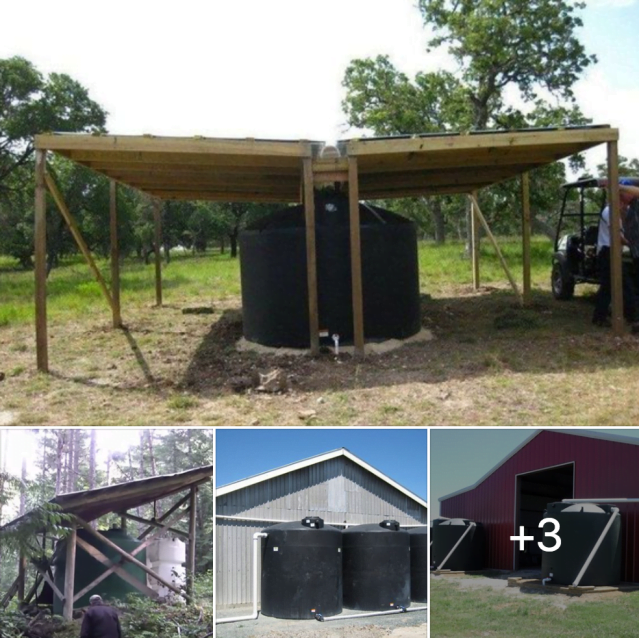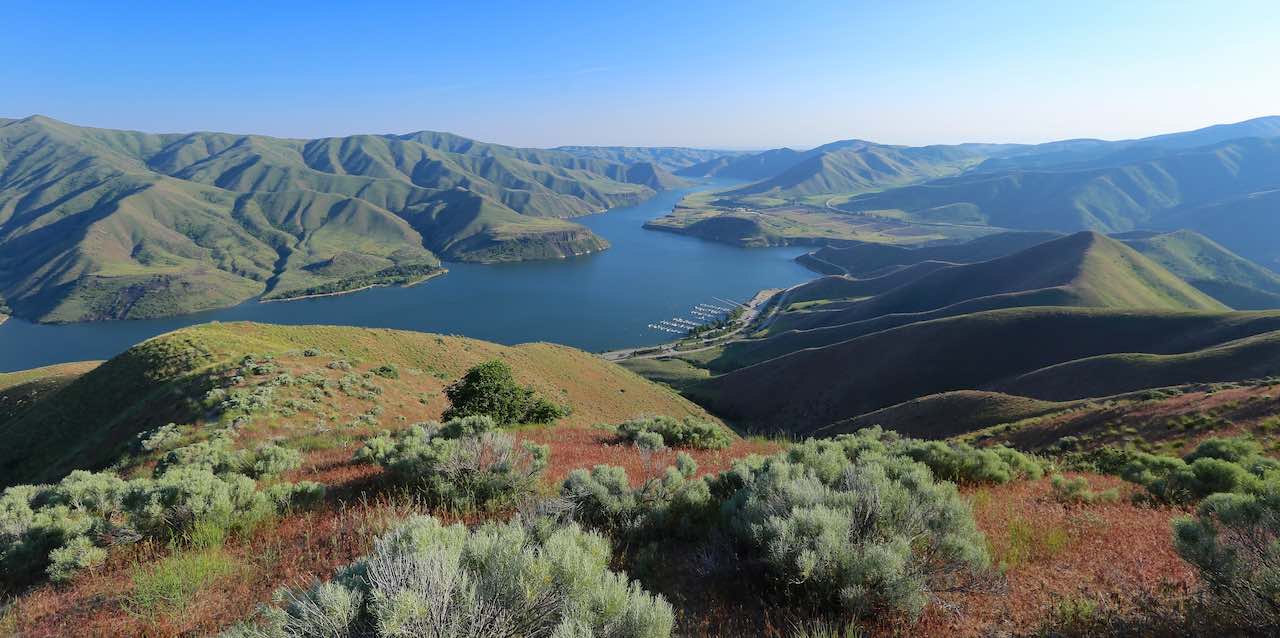If you’re looking for a state that offers the perfect mix of off-grid living and rainwater harvesting, look no further than Idaho. Located in the northwestern part of the country, Idaho boasts a low population density and is considered one of the best states for those seeking a self-sufficient lifestyle. With legal provisions for living off the grid and harvesting rainwater, Idaho attracts individuals who value sustainability and independence. The cost of living is lower than the national average, crime rates are low, and the state offers fertile land for farming. However, the local climate, with its long and cold winters, can be a challenge for off-grid living. Despite this, Idaho’s untouched wilderness, national forests, and freshwater availability make it an ideal haven for those seeking a simpler way of life. Whether you’re a prepper or simply someone looking to reconnect with nature, Idaho may just be the perfect place for you.

Idaho’s Location and Population Density
Idaho, located in the northwestern part of the United States, is known for its stunning natural beauty and low population density. With its vast open spaces and breathtaking landscapes, it’s no wonder that many people are drawn to this state. The population density in Idaho is relatively low compared to other states, allowing for a sense of tranquility and space that is hard to find elsewhere.
Off-Grid Living in Idaho
Legal provisions for living off the grid
One of the reasons why Idaho is considered one of the best states for off-grid living is its legal provisions for such a lifestyle. The state recognizes the importance of self-sufficiency and sustainable living, and thus has created regulations that support off-grid living. These provisions allow individuals to live off the grid, generate their own power, and utilize alternative sources of energy without interference.
Attractiveness for people from California seeking affordable options
Idaho has become increasingly attractive for individuals seeking more affordable options for living, especially those coming from neighboring California. With soaring housing prices and a high cost of living in California, many people are looking for opportunities to improve their financial situation and enjoy a more affordable lifestyle. Idaho provides exactly that, with lower costs of living and a more favorable economic environment.
Large population of people living off the grid or in a semi off-grid fashion
In addition to its legal provisions, Idaho also boasts a large population of people who choose to live off the grid or in a semi off-grid fashion. These individuals prioritize self-sufficiency and sustainability, and find that Idaho’s natural resources and open spaces provide the perfect environment for their chosen lifestyle. The state has a supportive off-grid community, making it easier for like-minded individuals to connect and share knowledge and resources.
Challenges of off-grid living in Idaho
While off-grid living in Idaho has its advantages, it also comes with its own set of challenges. The climate, with its cold and long winters, can pose difficulties for individuals relying on solar power or growing their own food. Road access can also be challenging during the winter months due to high snowfall in some areas. However, with proper planning and preparation, these challenges can be overcome, and the rewards of living off the grid in Idaho are well worth it.

Rainwater Harvesting in Idaho
Rainwater harvesting is legal in Idaho
Idaho recognizes the importance of sustainable water use and allows for rainwater harvesting. This practice involves collecting rainwater from roofs or other surfaces, storing it, and using it for various purposes such as irrigation or household use. By capturing rainwater, individuals can reduce their dependency on traditional water sources and contribute to a more sustainable way of life.
Availability of freshwater in Idaho
One of the advantages of living in Idaho is the abundance of freshwater. The state is home to numerous lakes, rivers, and streams, providing ample water resources for its residents. This availability of freshwater ensures that individuals can easily access clean and reliable water for their daily needs. Combined with the option of rainwater harvesting, Idaho offers a promising environment for those looking to live sustainably.
Cost of Living in Idaho
Lower than national average
Idaho boasts a cost of living that is lower than the national average. This means that individuals living in the state can enjoy a more affordable lifestyle compared to many other parts of the country. From everyday expenses like groceries and transportation to housing costs, Idaho offers a financial advantage that can significantly improve one’s quality of life.
Housing prices higher than national average
While the overall cost of living in Idaho is lower, it’s important to note that housing prices tend to be higher than the national average. This is especially true in popular areas and regions with high demand. However, even with the higher housing prices, Idaho still remains a more affordable option compared to states like California or New York.
Property tax below national average
Another advantage of living in Idaho is the relatively low property tax rates. The average property tax in Idaho is below the national average, which means that homeowners can save money on their annual tax bills. This reduction in property taxes can help offset the higher housing prices, making Idaho an attractive choice for homeowners looking to maximize their financial resources.
Unemployment rate below national average
Idaho boasts an unemployment rate that is below the national average. This means that finding employment opportunities in the state is generally easier compared to other parts of the country. The favorable job market ensures that individuals moving to Idaho can secure employment and maintain a stable source of income, contributing to their overall financial well-being.
Minimum wage in Idaho
The minimum wage in Idaho is set at $7.25, which is the federal minimum wage. While this wage may appear low compared to the cost of living, it’s important to consider the overall lower expenses in Idaho. The lower cost of living helps to mitigate the impact of the minimum wage, ensuring that individuals can still maintain a decent standard of living.

Farming in Idaho
Fertile land for farming in Idaho
Idaho’s fertile land makes it an ideal location for farming. The state’s rich soil and favorable climate create a conducive environment for cultivating a wide range of crops. Farmers in Idaho have access to vast agricultural land, allowing them to produce high-quality fruits, vegetables, and grains to meet both local and national demands.
Short growing period in northern parts of the state
While Idaho offers fertile land, it’s worth noting that the northern parts of the state have a short growing season due to colder temperatures. This can present challenges for farmers who rely on longer growing periods to maximize their crop yields. However, with proper planning and the use of innovative farming techniques, farmers in Idaho have managed to overcome this obstacle and continue to thrive in their agricultural pursuits.
Predominant crops in Idaho
Idaho is known for its potato production and is often referred to as the “Potato State.” Potatoes are among the predominant crops in the state, with Idaho producing a significant percentage of the nation’s potatoes. In addition to potatoes, Idaho also produces crops such as hay, wheat, sugar beets, barley, and other fruits and vegetables. The diverse range of crops grown in Idaho highlights the state’s agricultural prowess.
Climate and Natural Resources in Idaho
Variety of climates in Idaho
Idaho experiences a variety of climates across its vast expanse. The majority of the state has a humid continental climate, characterized by hot summers and cold winters. However, some southern parts of Idaho, particularly near the Snake River Plain, have a humid subtropical climate, which brings warmer temperatures and higher precipitation.
Untouched wilderness and national forests
Idaho is home to a significant amount of untouched wilderness and national forests. These pristine natural areas provide habitats for a diverse range of wildlife and offer breathtaking views and recreational opportunities. From hiking and camping to fishing and wildlife observation, Idaho’s wilderness areas are a treasure for nature lovers and outdoor enthusiasts.
Wildlife in Idaho
Idaho’s diverse ecosystems support a wide variety of wildlife. The state is home to numerous species of mammals, including elk, deer, moose, wolves, and bears. Birds, such as eagles, hawks, and owls, also thrive in Idaho’s forests and open spaces. Additionally, Idaho’s lakes and rivers are teeming with fish, making it a paradise for anglers and fishing enthusiasts.
Road access challenges during winter
The climate in Idaho, particularly during the winter months, can present road access challenges in some areas. High snowfall and freezing temperatures can lead to icy and treacherous road conditions, making travel difficult or even impossible in certain regions. It’s important for residents to be prepared for these conditions and take necessary precautions to ensure their safety and well-being.
Natural disasters in Idaho
Like any other state, Idaho is not immune to natural disasters. The state can experience storms, floods, wildfires, earthquakes, and snowstorms. While the occurrence of these events is relatively low compared to some other regions, it’s essential for residents to be aware of the potential risks and take appropriate measures to protect themselves and their properties.

Tax Credits and Incentives for Renewable Energy
Tax credits for solar power systems in Idaho
Idaho offers tax credits for solar power systems, encouraging residents to invest in renewable energy. These tax credits can significantly offset the cost of installing solar panels and make solar energy more accessible and affordable for homeowners. By utilizing these incentives, individuals can not only reduce their reliance on traditional energy sources but also contribute to the state’s overall environmental sustainability.
No local incentives for wind power
While Idaho provides tax credits for solar power, there are currently no local incentives specifically for wind power. However, wind is still a viable source of renewable energy in the state, and residents can explore federal incentives and programs to offset the costs associated with wind energy installations.
Crime Rate in Idaho
Below-average crime rate overall
Idaho has a below-average crime rate overall, making it a safe place to live and raise a family. The state’s commitment to public safety and its close-knit communities contribute to a sense of security for its residents. Idahoans can enjoy a peaceful and low-stress lifestyle, knowing that their safety is a top priority.
Certain areas with higher crime rates
While the crime rate in Idaho is generally low, certain areas may experience higher crime rates. It’s important for individuals considering a move to Idaho to research specific regions and neighborhoods to ensure they choose a safe and secure place to live. By being mindful of local crime statistics and taking necessary precautions, residents can further enhance their personal safety and well-being.

Conclusion
Idaho offers a wealth of opportunities for individuals seeking a different way of life. With its location in the northwestern part of the country, low population density, and attractive legal provisions for off-grid living, Idaho is a desirable state for those looking to live a self-sufficient and sustainable lifestyle. The availability of rainwater harvesting, lower cost of living (except for housing), fertile land for farming, and variety of climates make Idaho an ideal choice for individuals seeking a more affordable and fulfilling living experience. With its natural resources, tax credits for renewable energy, and below-average crime rate, Idaho provides a promising environment for individuals and families looking to create a better future for themselves.




